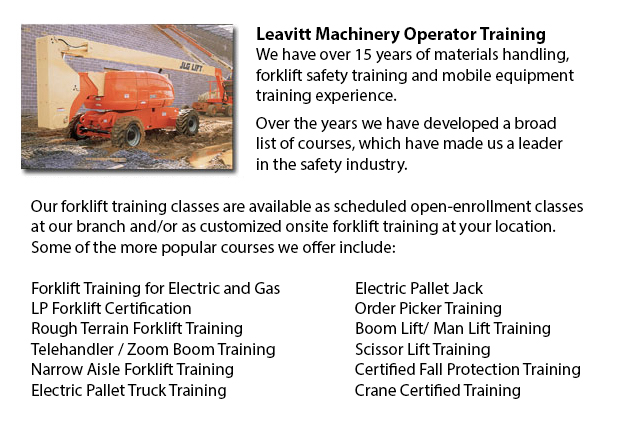
Boom Lift Safey Training Vancouver - Boom lifts fall under the kind of aerial lifting device or elevated work platform. Most commonly used in industry, warehousing and construction; the boom lift is really versatile that it can be used in practically whichever environment.
The elevated work platform is utilized in order to allow access to heights which were otherwise not reachable making use of other methods. There are risks inherent when using a boom lift device. Workers who operate them have to be trained in the proper operating techniques. Preventing accidents is paramount.
Boom Lift Training Programs include the safety factors involved in using boom lifts. The program is suitable for those who operate self-propelled boom supported elevated work platforms and self-propelled elevated work platforms. Upon successfully finishing the course, Those who participated will be issued a certificate by somebody certified to verify completing a hands-on evaluation.
Industry agencies, federal and local regulators, and lift manufacturers all play a part in providing information and establishing standards to be able to help train operators in the safe use of elevated work platforms. The most important ways in preventing accidents connected to the use of elevated work platforms are as follows: conducting site assessments; inspecting machines; and wearing safety gear.
Important safety factors when operating Boom lifts:
Operators stay away from power line, observing the minimum safe approach distance (MSAD). Voltage could arc across the air to be able to find an easy path to ground.
A telescopic boom must be retracted prior to lowering a work platform to be able to maintain stability as the platform nears the ground.
Boom lift workers must tie off to guarantee their safety. The lanyard and safety contraption should be connected to manufacturer provided anchorage, and never to other poles or wires. Tying off may or may not be needed in scissor lifts, that depends on specific job risks, local regulations, or employer guidelines.
Avoid working on a slope that exceeds the maximum slope rating as specified by the manufacturer. If the slop exceeds requirements, then the equipment should be transported or winched over the slope. A grade can be easily measured by laying a minimum 3-feet long straight edge or board on the slope. Afterward a carpenter's level can be laid on the straight edge and raising the end until it is level. The percent slope is obtained by measuring the distance to the ground (the rise) and dividing the rise by the length of the straight edge. After that multiply by one hundred.
-
Telehandler Ticket Vancouver
Telehandler Ticket Vancouver - The telescopic handler or telehandler is a frequently used equipment in agricultural and industrial applications. This equipment is similar in appearance to a forklift and also functions in a similar way, even if teleha... More -
Forklift Operator Certification Vancouver
Forklift Operator Certification Vancouver - Forklift operator certification is usually needed for employees working within industrial, warehouse or construction environments to guarantee the safe operation of forklifts. Workplace training need to fol... More -
Certified Fall Protection Training in Vancouver
There are high numbers of injuries at work linked to falling and a lot of fall-related deaths reported each and every year. The majority of these instances might have been avoided with better training, better measures in place, and by correctly equip... More -
Forklift Training Course Vancouver
Forklift Training Course Vancouver - CSA and OSHA establish criteria for forklift safety training which meets existing standards and regulations. Anyone planning to utilize a forklift is needed to successfully complete safety training prior to using... More -
Overhead Crane Certification Vancouver
Overhead Crane Certification Vancouver - The overhead crane certification course is a program that is designed to assist trainees, even if they have literacy or language restrictions. The course comprises a practical hands-on training session and a c... More -
Forklift Instructor Training Vancouver
Forklift Instructor Training Vancouver - Forklift Instructor training certification is recommended for forklift operators who would like to become instructors. To qualify for forklift instructor training, operators must be able to prove they possess... More -
Crane / Overhead Crane / Truck Mounted Crane / Hydraulic Cranes Training in Vancouver
Overhead cranes are likewise referred to as bridge cranes. They are actually a type of crane which comprises a hook and line apparatus which runs along a horizontal beam which runs along two widely separated rails. Lots of overhead cranes can be foun... More -
Scissor Lift Safety Training Vancouver
Scissor Lift Safety Training Vancouver - A scissor lift is a kind of platform lift that moves vertically. The lift table is moved in a vertical motion because of criss-cross folding supports which are linked in what is referred to as a pantograph. Th... More

Forklift Training Vancouver
TOLL FREE: 1-888-254-6157
24389 Fraser Highway
Langley, British Columbia
forklifttrainingvancouver.com
Email Us
About Us


